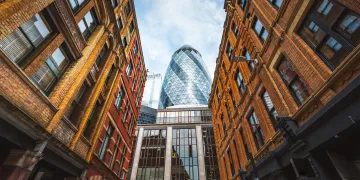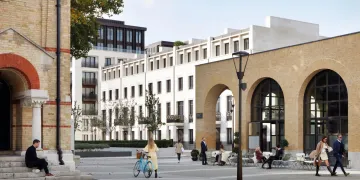London's architecture is a testament to the city's rich history, diverse culture and ever-evolving design sensibilities. From medieval structures to cutting-edge modern marvels, the cityscape of London is a seamless blend of old-world charm and contemporary innovation.
Roman and Gothic Beginnings
London's architectural journey began with the Roman settlement of Londinium in the 1st century, laying the city's urban foundation. Over the centuries, cultural shifts have left indelible marks on London's architectural landscape. The Gothic period introduced iconic landmarks such as Westminster Abbey, showcasing the grandeur of pointed arches and ribbed vaults. Other notable examples from the Gothic period include the stunning St. Paul's Cathedral and the intricate details of the Houses of Parliament. These structures stand as architectural marvels and serve as enduring symbols of London's historical significance.
Georgian Elegance
During the Georgian era, elegant townhouses and squares flourished in West London. One of the jewels of this period is undoubtedly the Royal Crescent in Kensington. Designed by the acclaimed architect John Nash, the Royal Crescent exemplifies the Georgian commitment to proportionality and classical aesthetics.
The Georgian influence on London's architecture during this period extended beyond individual structures, permeating entire neighbourhoods. The grid-like layout of squares and townhouses in Belgravia, for instance, reflects the desire for order and balance in urban planning. Streets were lined with elegant townhouses, each meticulously designed to complement its neighbours and create a harmonious streetscape that reflected the ideals of the Georgian era. The influence worked into the interior design of these townhouses as well, with rooms arranged in symmetrical fashion and adorned with neoclassical detailing.

London’s Modern Architectural Masters
In modern times, though, the visionary architects Sir Norman Foster and Lord Richard Rogers have left their mark on London's architectural landscape through their pioneering and sustainable designs. Foster's architectural philosophy emphasises harmony between aesthetics, functionality, and environmental sustainability. His iconic works, such as The Gherkin at 30 St Mary Axe, showcase his mastery in creating energy-efficient and environmentally conscious buildings that redefine the city's skyline.
Foster's impact can be traced through the integration of sustainable design principles into the urban fabric. His commitment to creating spaces that are not only visually stunning but also ecologically responsible has worked as a catalyst in shifting the way architects approach their craft in the city. The legacy of Foster's contributions lies not just in the steel and glass of his iconic buildings but in the enduring transformation of London into a global hub for progressive and sustainable architecture, reflecting his dedication to pushing the boundaries of what is possible in urban design.
Similarly, Lord Richard Rogers, with his influential "inside-out" design approach, has brought forth iconic structures like the Lloyd's Building and the Millennium Dome (now The o2 Arena). These buildings are characterised by their innovative use of space, sustainable materials and advanced structural systems, demonstrating their commitment to a greener and more sustainable urban environment. Both architects have not only reshaped London's skyline but have also inspired a new generation of designers to prioritise sustainable practices and holistic design concepts in creating the city's architectural future.
Preserving the Architecture of London
As the city embraces modernisation, preservation efforts have become paramount in safeguarding its charm. Organisations dedicated to the preservation of historic buildings play a vital role in ensuring that London's architectural legacy remains intact both in terms of existing buildings but also new developments.

One such notable example of successful preservation is Chelsea Barracks. Through a considered blend of classical and contemporary design, Chelsea Barracks retained the area's quintessence while still embracing elements of modernity. The architectural decisions guiding the transformation of Chelsea Barracks into a harmonious blend of classical and contemporary design were rooted in a profound respect for the historical significance of the site. The incorporation of classical elements paid homage to the site's history, ensuring a seamless integration with the surrounding context. The estate serves as a testament to the notion that preserving a city's history can coexist harmoniously with the imperative for forward-thinking architectural innovation, ultimately creating a vibrant and enduring urban landscape.
London's architecture is a dynamic tapestry that weaves together its historical past and modern ambitions. As the city continues to grow and evolve, London's architectural journey remains a compelling reflection of its thriving artistic culture and ever-changing urban landscape.


